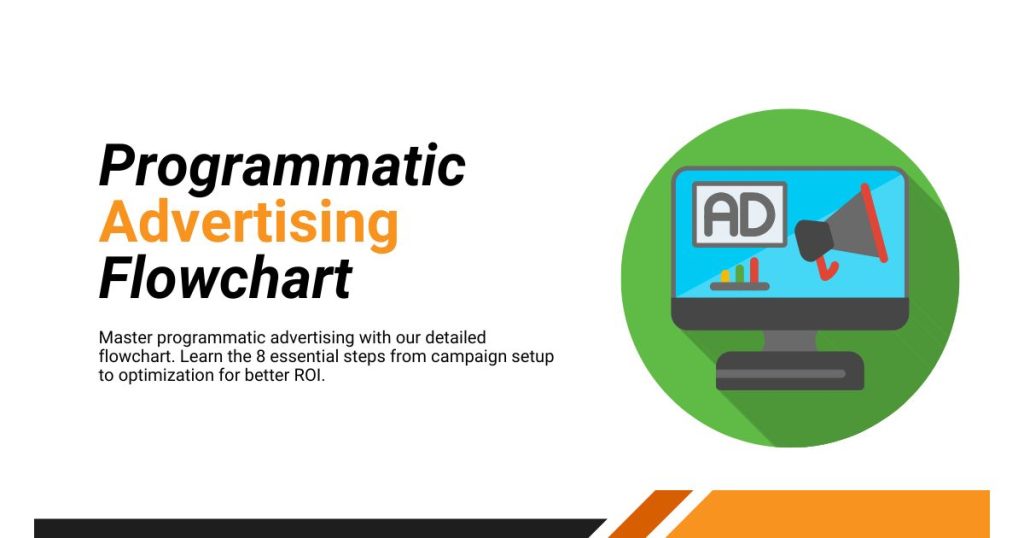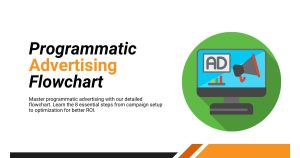The Complete Programmatic Advertising Flowchart: Your Step-by-Step Guide

Programmatic advertising has revolutionized how digital ads are bought and sold, transforming what once took days of manual negotiations into millisecond transactions. But understanding the complex ecosystem of demand-side platforms, supply-side platforms, and ad exchanges can feel overwhelming—especially when you’re trying to optimize campaigns and maximize ROI.
This comprehensive flowchart breaks down the entire programmatic advertising process into clear, actionable steps. Whether you’re a marketing manager launching your first programmatic campaign or an experienced advertiser looking to refine your strategy, this visual guide will help you navigate the automated advertising landscape with confidence.
By the end of this post, you’ll understand exactly how programmatic advertising works, which platforms and tools you need at each stage, and how to build campaigns that deliver results. Let’s dive into the step-by-step process that powers billions of ad transactions every day.
Understanding the Programmatic Advertising Ecosystem

Before exploring the flowchart, it’s essential to grasp the key players in programmatic advertising. Think of it as a digital marketplace where advertisers and publishers connect through sophisticated technology platforms.
Demand-Side Platforms (DSPs) allow advertisers to purchase ad inventory across multiple publishers simultaneously. These platforms use algorithms to bid on ad spaces that match your target audience criteria.
Supply-Side Platforms (SSPs) help publishers manage and sell their available ad inventory to the highest bidder. They optimize revenue by connecting to multiple ad exchanges and demand sources.
Ad Exchanges serve as the digital auction houses where DSPs and SSPs meet to buy and sell ad inventory in real-time. Popular exchanges include Google Ad Exchange, OpenX, and PubMatic.
Data Management Platforms (DMPs) collect, organize, and analyze audience data from various sources, enabling more precise targeting and campaign optimization.
The Programmatic Advertising Flowchart: 8 Essential Steps
Step 1: Campaign Setup and Strategy Development
Your programmatic advertising journey begins with defining clear objectives and target audiences. Start by identifying your campaign goals—whether that’s brand awareness, lead generation, or direct sales.
Next, define your target audience using demographic, behavioral, and contextual data. Most DSPs offer detailed targeting options, including age, location, interests, browsing history, and device preferences.
Set your budget parameters and bidding strategy. Decide between cost-per-click (CPC), cost-per-mille (CPM), or cost-per-action (CPA) models based on your campaign objectives.
Step 2: Audience Data Integration and Segmentation
Connect your first-party data sources, including customer databases, website analytics, and CRM systems. This proprietary data often provides the highest-quality targeting insights.
Integrate third-party data sources through your DMP or DSP. These might include demographic data, purchase intent signals, or lifestyle information from providers like Acxiom or Experian.
Create audience segments based on your campaign goals. For example, you might build segments for previous website visitors, lookalike audiences based on existing customers, or prospects in specific geographic markets.
Step 3: Creative Asset Preparation and Dynamic Optimization
Develop multiple creative variations to test different messages, visuals, and calls-to-action. Programmatic platforms excel at automatically optimizing creative performance through A/B testing.
Ensure your creative assets meet the technical requirements for your target inventory. This includes proper sizing for display, video, mobile, and native ad formats.
Set up dynamic creative optimization (DCO) if your platform supports it. DCO automatically combines different creative elements based on audience segments and performance data.
Step 4: Inventory Selection and Bid Strategy Configuration
Choose your inventory sources carefully. You can access inventory through open exchanges, private marketplaces (PMPs), or direct programmatic deals with specific publishers.
Configure your bidding strategy based on your campaign objectives. Real-time bidding (RTB) algorithms will use your parameters to compete for ad placements across thousands of websites.
Set frequency caps to avoid overwhelming users with too many impressions. Most campaigns perform best with frequency caps between 3-5 impressions per user per day.
Step 5: Real-Time Bidding Execution
When a user visits a website with available ad space, the publisher’s SSP sends a bid request to multiple ad exchanges. This request includes information about the user, the website, and the available ad placement.
Your DSP receives the bid request and analyzes whether the opportunity matches your campaign criteria. The platform considers factors like audience fit, inventory quality, and bid price within milliseconds.
If the opportunity aligns with your campaign parameters, your DSP submits a bid to the ad exchange. This entire process typically completes in under 100 milliseconds.
Step 6: Ad Serving and User Experience Delivery
When your bid wins the auction, the ad exchange notifies your DSP, and your creative asset is served to the user’s browser or mobile app.
The ad server delivers the appropriate creative based on the user’s device, location, and audience segment. Dynamic creative optimization ensures users see the most relevant version of your message.
Viewability and fraud detection systems monitor the ad placement to ensure quality delivery and protect against invalid traffic.
Step 7: Performance Monitoring and Data Collection
Your DSP and analytics platforms begin collecting performance data immediately after ad delivery. Key metrics include impressions, clicks, conversions, and engagement rates.
Attribution systems track user actions across devices and touchpoints to provide comprehensive conversion data. This helps you understand the full customer journey and optimize accordingly.
Real-time dashboards display campaign performance, allowing for quick adjustments to bidding, targeting, or creative strategies as needed.
Step 8: Campaign Optimization and Scaling
Analyze performance data to identify high-performing audience segments, creative variations, and inventory sources. Reallocate budget toward the best-performing elements.
Implement automated optimization rules based on your key performance indicators. For example, you might automatically increase bids for audiences with high conversion rates or pause placements with poor viewability.
Scale successful campaigns by expanding to similar audience segments, additional inventory sources, or new geographic markets while maintaining performance standards.
Advanced Programmatic Advertising Strategies

Cross-Device Targeting leverages device identification technology to reach users across smartphones, tablets, and desktop computers. This approach provides a more complete view of customer behavior and enables more effective frequency management.
Lookalike Modeling uses machine learning algorithms to identify new prospects who share characteristics with your existing customers. Most major DSPs offer lookalike audience creation tools that can significantly expand your reach.
Sequential Messaging delivers different creative messages based on where users are in the customer journey. For example, awareness-focused ads for new visitors, product-specific ads for engaged prospects, and retention-focused messages for existing customers.
Common Programmatic Advertising Challenges and Solutions
Brand Safety Concerns can be addressed through whitelist and blacklist management, contextual targeting, and partnerships with brand safety vendors like Integral Ad Science or DoubleVerify.
Ad Fraud Prevention requires implementing fraud detection tools, monitoring traffic quality metrics, and working with certified inventory sources. Look for publishers who participate in programs like TAG (Trustworthy Accountability Group).
Attribution Complexity can be simplified by implementing unified measurement frameworks, using marketing mix modeling, and setting up proper conversion tracking across all touchpoints.
Measuring Success in Programmatic Advertising
Establish clear KPIs aligned with your business objectives. Brand awareness campaigns might focus on reach and frequency metrics, while performance campaigns prioritize conversion rates and return on ad spend (ROAS).
Implement proper tracking and attribution systems before launching campaigns. This includes setting up conversion pixels, configuring Google Analytics goals, and establishing baseline metrics for comparison.
Regular performance reviews should analyze both tactical metrics (CTR, CPC, viewability) and business outcomes (leads generated, sales attributed, customer acquisition cost). Use these insights to refine your programmatic advertising flowchart continuously.
Maximizing Your Programmatic Advertising Success
The programmatic advertising flowchart outlined above provides a systematic approach to automated ad buying, but success depends on consistent optimization and strategic thinking. Start with clear objectives, invest in quality data and creative assets, and maintain a testing mindset throughout your campaigns.
Remember that programmatic advertising is not a set-it-and-forget-it solution. The most successful campaigns require ongoing attention, data analysis, and strategic adjustments. Use this flowchart as your foundation, but always be prepared to adapt based on performance data and changing market conditions.
Ready to implement programmatic advertising for your business? Begin with a small test campaign using this flowchart as your guide, and gradually scale your efforts as you build expertise and confidence in the process.





